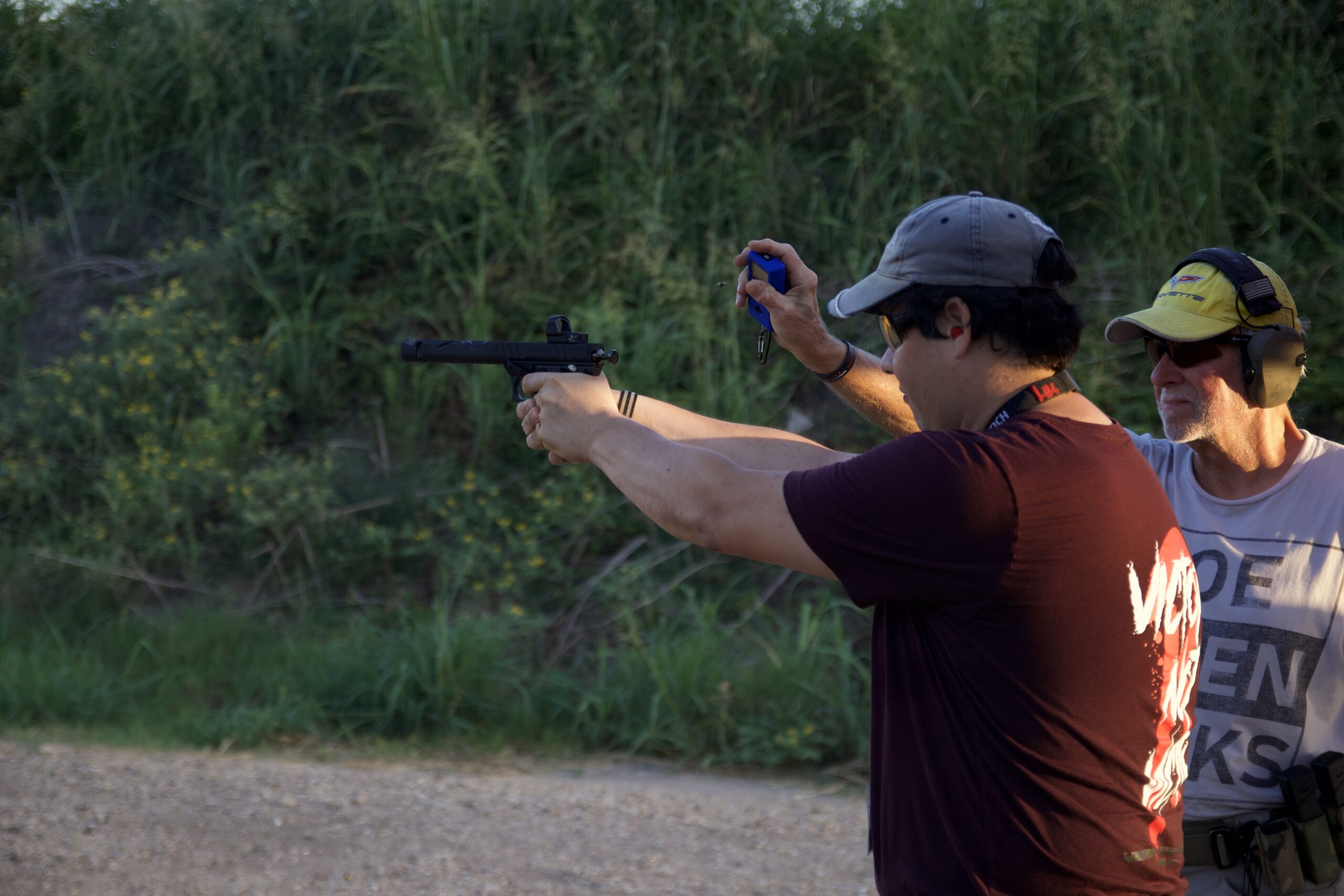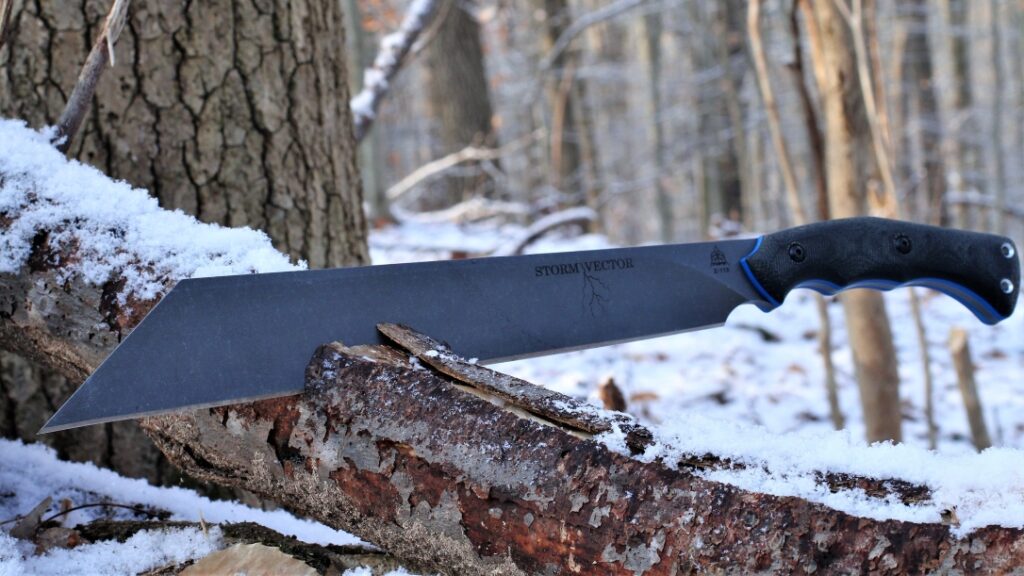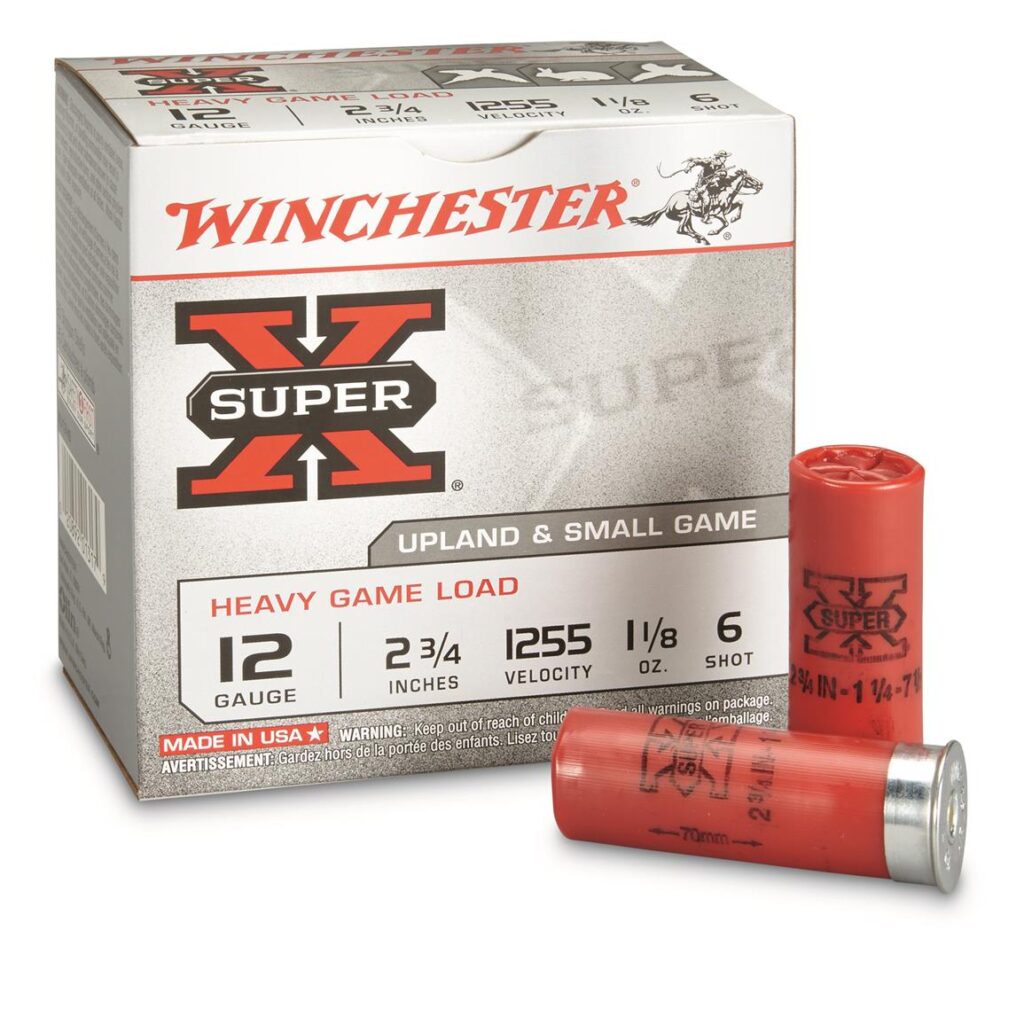My local gun club has a short Steel Challenge match on Thursday nights during the summer. No doubt, it takes advantage of the extended summer daylight hours while also serving as a pleasant mid-week evening activity. Recently, I finally made it to one of these casual club matches, and I’m glad I did.
Although I’m still a newcomer to Steel Challenge, I’m really enjoying how laid-back these contests are. It’s also cool that competitors have the opportunity to bring and shoot almost any handgun, as the power factor isn’t a “factor” the way it is in USPSA or IDPA. Steel Challenge is also one of the few action shooting sports that offers competitive rimfire divisions, including semi-auto rimfire long guns.
At the time I write this, I’ve had so much fun that I’ve gone twice in the last two weeks shooting nothing but .22LR guns in a carefree manner.
Advertisement — Continue Reading Below
Steel Challenge: A Simple But Intense Contest
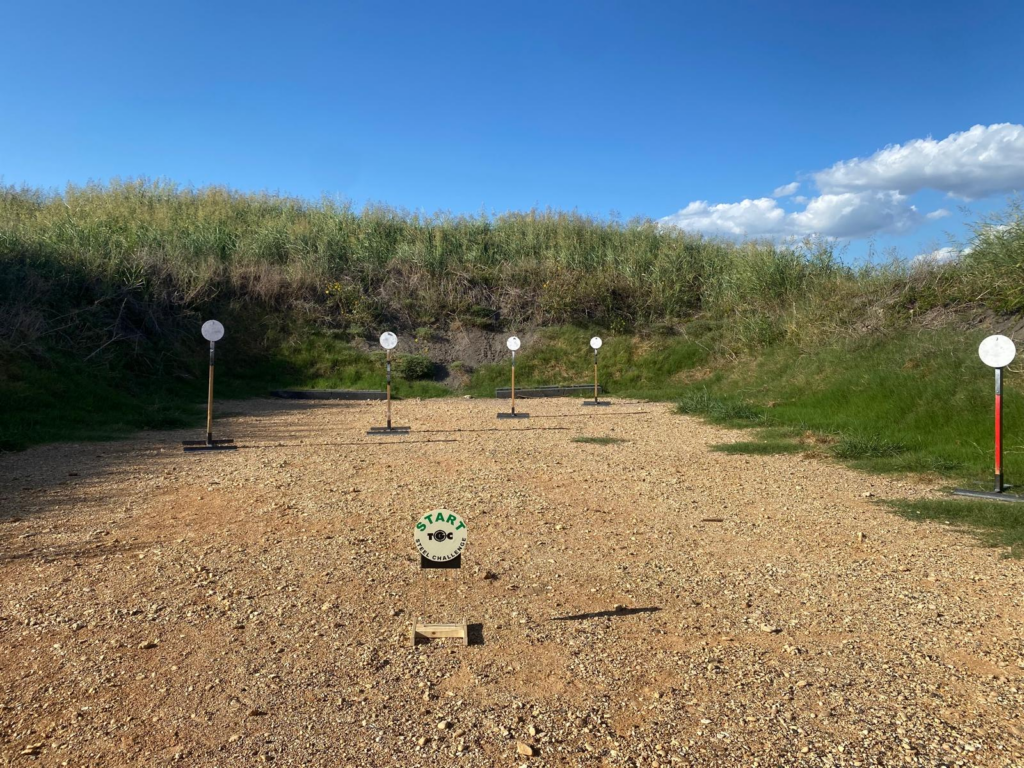
Steel Challenge is a contest all about shooting steel plates as quickly as possible. Unlike other action pistol sports like USPSA or IDPA, Steel Challenge stages are extremely simple and consist of different arrays of round or rectangular steel targets painted in high-contrast white.
There are no stages to walk through or to plan, and everything comes down to sheer pistol-shooting speed and fundamentals: the draw, sight picture, grip, trigger control, and visual transitions. It’s easy but also incredibly difficult to execute at the highest levels. Championship-level Steel Challenge matches often result in world records.
Advertisement — Continue Reading Below
In Steel Challenge, a shooter stands in a 3×3-ft box to shoot at five different targets in each stage. The Steel Challenge Outer Limits is the only stage that requires movement under the clock. But even then, it merely consists of shuffling laterally from one box to the next.
The “Stop Plate”
In Steel Challenge, none of the steel targets are hidden, mechanically activated, or complex in any way, shape, or form. And no matter the stage, there are only five different targets, including the “stop plate.”
Stop Plates are always the fifth and last target, which shooters must engage last in order to stop the clock for their string of fire. They are usually marked with red pedestals to differentiate them from the rest of the array on a stage. Stop plates are often the central target, and this subtly increases the difficulty for the shooter, as they must swing past the stop plate and shoot steel on the opposite end before swinging the muzzle back to the middle.
Advertisement — Continue Reading Below
Scoring

There are eight official Steel Challenge stages, and at a Steel Challenge match, each shooter gets five different chances to shoot each stage. The slowest or lowest scoring run from each stage is deleted, and the rest of the four run times are computed to determine the shooter with the fastest overall time.
Unlike IDPA or USPSA, which award shooters higher or lower points for shooting different areas of a target, the only thing that matters in Steel Challenge is that a competitor hits each target once, and the stop plate last.
Advertisement — Continue Reading Below
Steel Challenge is like golf, where the winners with the highest scores have the lowest numbers. Missing targets that aren’t the stop plate can be fatal, as each missed target per stage incurs a time penalty of +3.00 seconds.
And as far as missing the stop plate, well, the timer keeps ticking. For perspective, world-class competitors can clear the eight different official stages in less than three seconds, so a single miss means bombing the whole stage.
Steel Challenge Target Types
Steel targets vary from small round targets that measure ten inches, large round targets that measure twenty inches, and large rectangular vertically-oriented targets that measure 18 by 24 inches.
Advertisement — Continue Reading Below
In formal matches, targets are spray-painted over before each competitor starts their five attempts. In a more casual club setting, targets tend to be painted over only after the whole squad finishes the stage to save time.
Guns For Steel Challenge
Gun divisions in Steel Challenge mirror those from USPSA, with the exception of the rimfire pistol and rifle divisions. In short, Steel Challenge can be shot with the same equipment used in USPSA.
All shooters start with a holstered and loaded handgun with their hands above their shoulders in the “surrender position,” except for PCC and both types of rimfire shooters. The latter groups start in a low-ready position with their muzzles pointed at a sign that’s placed about 10 feet away from the shooting box.
Advertisement — Continue Reading Below
Standard velocity centerfire pistol calibers with a minimum caliber of 9mm are allowed, while centerfire magnum pistol cartridges or any centerfire rifle cartridges are forbidden. On the rimfire side, only .22 LR is permitted.
Rimfire Rifle Open and Rimfire Pistol Open
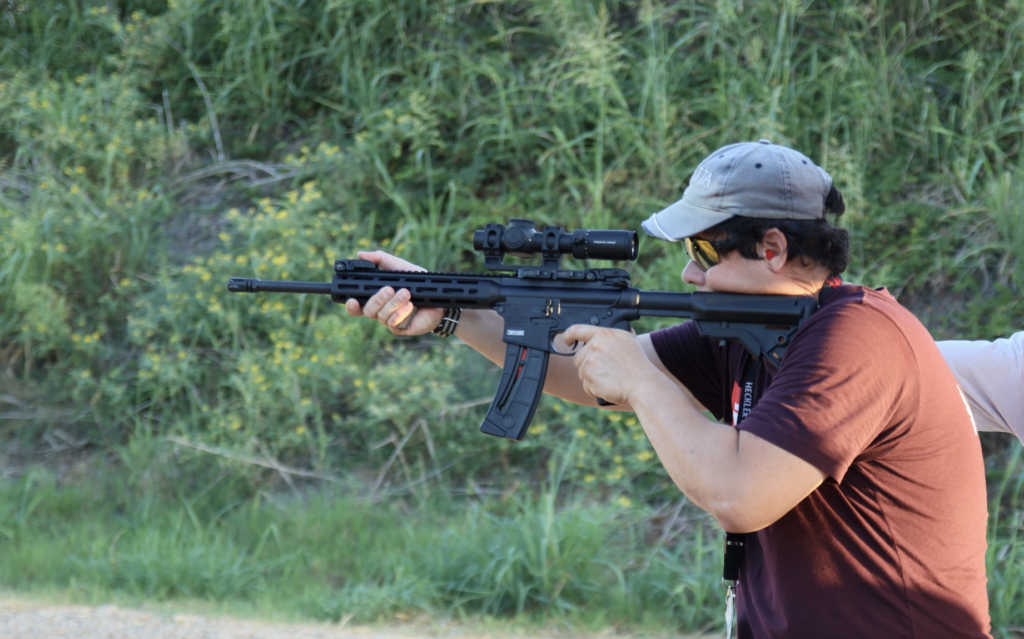
For my recent matches, I signed up under Rimfire Rifle Open and Rimfire Pistol Open both times. That’s another thing about chill Steel Challenge matches—shooters can usually sign up to shoot more than one division. Especially if there aren’t too many people at one match.
Advertisement — Continue Reading Below
I brought a Wojtek Race Pistol to this match along with the Smith & Wesson M&P 15-22 I reviewed this spring. This handy rimfire carbine lends itself well to Steel Challenge, and it’s still affordable to shoot. I’m concurrently working on a review of the Primary Arms PLxC 1-8 FFP LPVO. So, mounting it on the M&P 15-22 and bringing it to a Steel Challenge match would be a great way to “use” it more, especially on low power.
Wojtek Weaponry Race Pistol
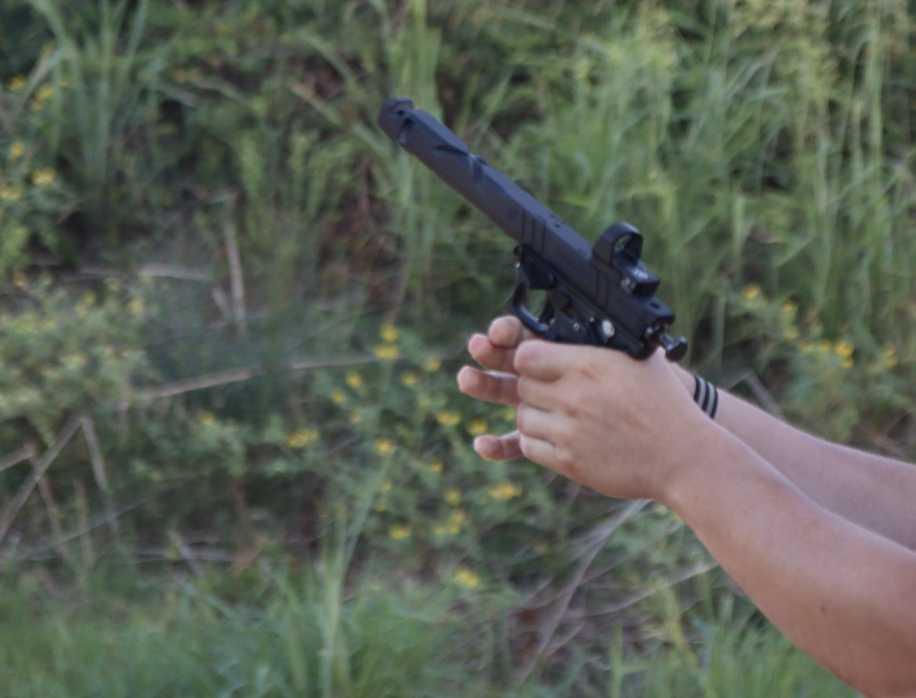
The Wojtek Race Pistol is a unique .22 LR pistol based on the Ruger 22/45 pattern. Wojtek Weaponry builds these pistols with combinations of Tandemkross frames and Volquartsen uppers in such a way that they’re legal in California despite their “handgun roster.”
Advertisement — Continue Reading Below
The Wojtek Race Pistol will get its own article in the future as the gun itself is fascinating and capable of extremely high-performance shooting.
Wojtek tricked out this model with a Volquartsen six-inch Mamba-X LLV compensated upper on which I mounted a Leupold Delta Point Pro 6 MOA reflex sight. The lower is manufactured by Tandemkross and has a match trigger and oversize “race” parts like a gas pedal and extended safety.
Being left-handed, I can’t comment much on them, as they’re configured for a right-handed shooter. The way this gun is set-up makes it tailor-made for Steel Challenge’s Rimfire Pistol Open, and it’s a lot of fun to shoot.
The Takeaway
Although I’ve only technically been to three Steel Challenge matches, I had a change of heart about this action pistol event. In the past, I wrote it off because I found it to be less “serious” than USPSA or even IDPA. But I’ve realized that’s precisely why it can be so “chill” and fun.
The acronym WYSIWYG (whiz-wig, or what-you-see-is-what-you-get) is an apt description for these events. Although having fun (with or without exotic rimfire race pistols) is important, it’s true that shooting five steel targets as fast as possible has a practical undercurrent that the defensive-minded shooter can also benefit from. Pure shooting mechanics don’t change because of the contest or venue.
Novice or veteran, the stress and pressure from the shot timer still counts, and it’s easier to miss than one would expect.
